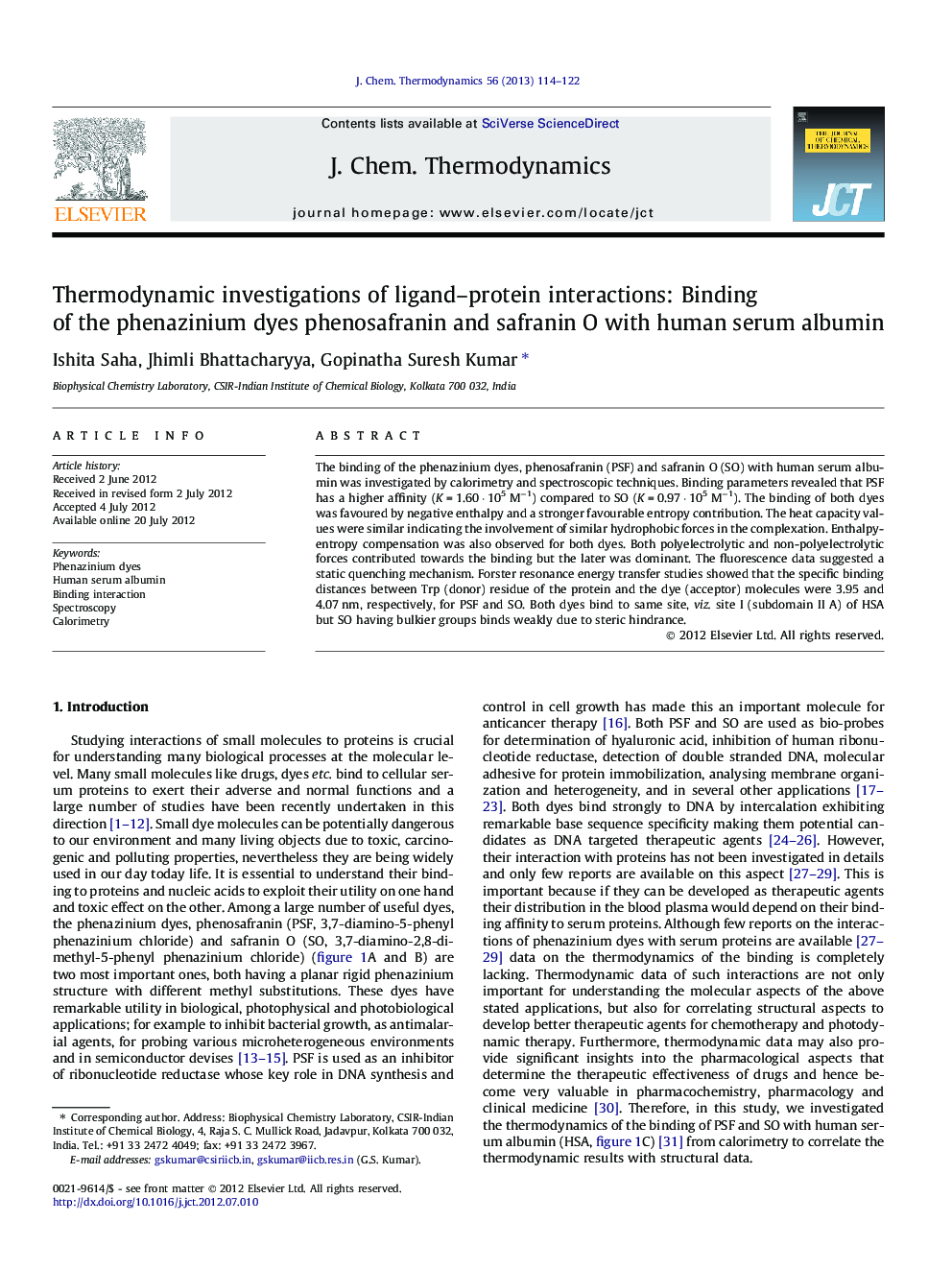| کد مقاله | کد نشریه | سال انتشار | مقاله انگلیسی | نسخه تمام متن |
|---|---|---|---|---|
| 215928 | 1426257 | 2013 | 9 صفحه PDF | دانلود رایگان |

The binding of the phenazinium dyes, phenosafranin (PSF) and safranin O (SO) with human serum albumin was investigated by calorimetry and spectroscopic techniques. Binding parameters revealed that PSF has a higher affinity (K = 1.60 · 105 M−1) compared to SO (K = 0.97 · 105 M−1). The binding of both dyes was favoured by negative enthalpy and a stronger favourable entropy contribution. The heat capacity values were similar indicating the involvement of similar hydrophobic forces in the complexation. Enthalpy-entropy compensation was also observed for both dyes. Both polyelectrolytic and non-polyelectrolytic forces contributed towards the binding but the later was dominant. The fluorescence data suggested a static quenching mechanism. Forster resonance energy transfer studies showed that the specific binding distances between Trp (donor) residue of the protein and the dye (acceptor) molecules were 3.95 and 4.07 nm, respectively, for PSF and SO. Both dyes bind to same site, viz. site I (subdomain II A) of HSA but SO having bulkier groups binds weakly due to steric hindrance.
Figure optionsDownload as PowerPoint slideHighlights
► The phenazinium dyes phenosafranin and safranin O bind to site I (subdomain IIA) of human serum albumin.
► The binding affinity of phenosafranin is higher than that of safranin O.
► The binding was driven by entropy at lower temperature and at higher temperature it was enthalpy driven.
► In the binding both polyelectrolytic and non-polyelectrolytic forces contributed but the later is more dominant.
Journal: The Journal of Chemical Thermodynamics - Volume 56, January 2013, Pages 114–122